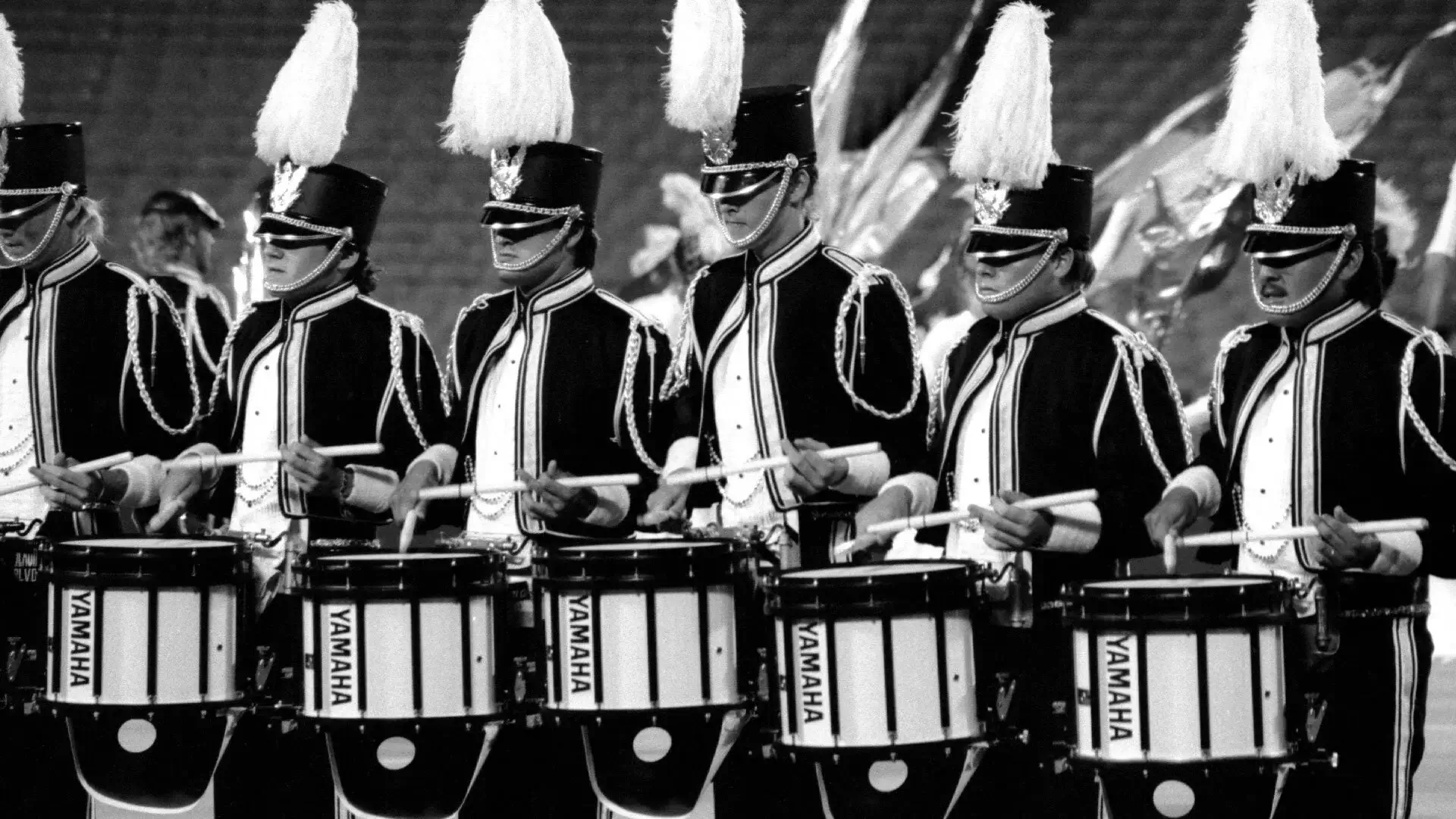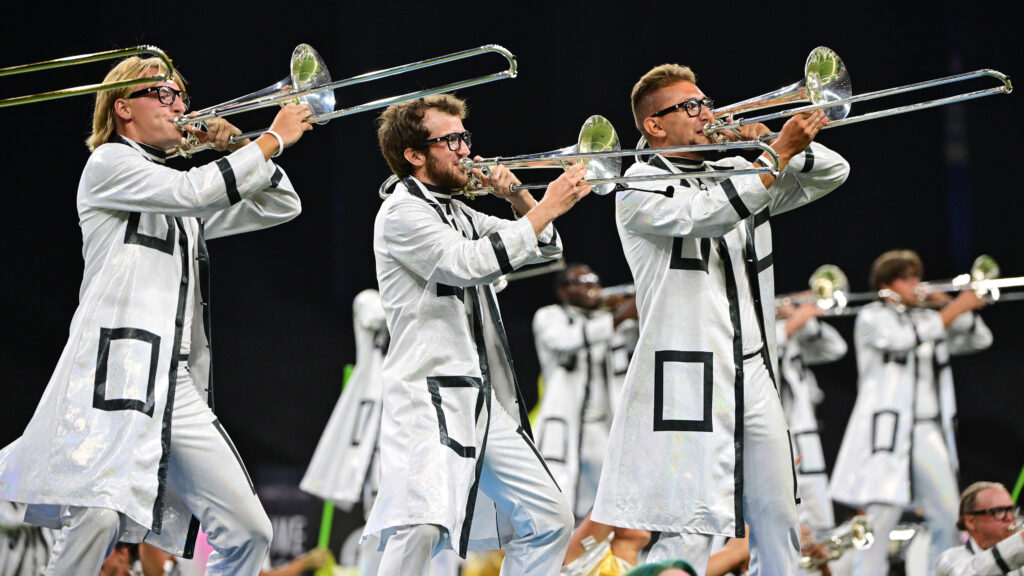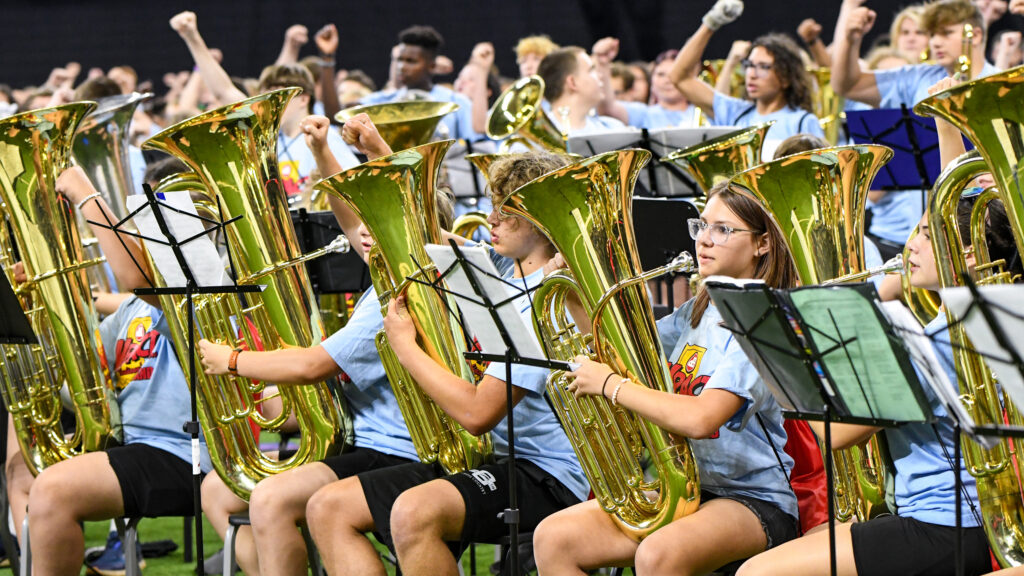The 1989 Drum Corps International World Championships were held in the spacious confines of Arrowhead Stadium near Kansas City for the second year in a row.
When Phantom Regiment’s second-place score of 98.40 was announced in the stadium, it tied the previous highest score for a finalist corps. But it was Santa Clara Vanguard’s “Phantom of the Opera” show that earned the corps its fifth DCI title with a new record high of 98.80.
With a fourth-place finish, 1989 marked the second of two years the Blue Devils would wear all-black uniforms. The show opened with Sammy Nestico’s “Ya Gotta Try,” a tune brought back from the corps’ World Championship-winning season of 1980 and originally written in 1977 for the Grammy-winning Count Basie Orchestra’s “Prime Time” album.

Opening with a jazzy introduction in the mallet percussion section, the contra tubas played a walking bass figure before the work evolved into the hottest jazz to be heard on the field that year.
Color guard members accompanied the section with bright-colored flags that really popped against their long white dresses and the black uniforms worn by the brass and percussion performers. A number of high-note-playing trumpet soloists reminded all that Blue Devils brass players were among the best-trained jazz artists in all of drum corps.
Next came “If We Were in Love,” from the 1982 musical-comedy film, “Yes, Giorgio,” starring famed operatic tenor Luciano Pavarotti in his only attempt at acting in a movie. The song was written by John Williams and was contributed to a film score that included works by Alan and Marilyn Bergman. While the song was nominated for top honors at both the Golden Globes and the Academy Awards, the Golden Raspberry Awards selected Pavarotti and the screenplay writer for worst honors, and critics Gene Siskel and Roger Ebert selected the film as one of the worst of the year.

For the entire work, color guard members utilized banners of sparkling blue and purple lamé that were draped over the arms, held over their heads, and swirled around their bodies. The simplicity of the banners was part of the success of the effect, as the audience paid rapt attention to the guard, wondering what they would do next with such a modest article. It was a thoroughly captivating example of less being more. It also helped that during the climax, the horn line pumped out a level of volume that pinned back the ears of the audience.
The Devils next turned to “Allegre,” a piece originally written for trumpet and jazz piano trio as the first movement of Claude Bolling’s “Toot Suite” of 1981. The work was noted for combining Baroque and jazz styles, incorporating C trumpet, E-flat trumpet, B-flat Cornet, B-flat piccolo trumpet, and flugelhorn.
The front ensemble percussionists duplicated the piano parts, while color guard members utilized lavender-colored orbs that were attached to long strings and swung around the body. One of the captivating moments on the Finals night video recording is the end of the work, when an on-field music judge, caught up in the moment, is seen pumping his arms in rhythm to the last four horn notes.

The corps closed out the production with “Johnny One Note,” written by Richard Rodgers and Lorenz Hart for the 1937 musical, “Babes in Arms.” The piece started with Afro-Cuban drumming on Caribbean drums. Color guard members utilized gleaming golden flags and streamers that were mostly of a shimmering gold.
Eventually picking up new huge flags of a variety of blues and purples at the front of the field, the guard performers ran through a company front of brass players that quickly pivoted every two members to let the guard through.
As the field was filled with vibrant colors for the final minute of the show, the horns turned up the volume with tricky jazz articulations. Finally unwrapping a tight block drill formation, the corps ended the show in a screaming high-note playing fashion that helped define the Blue Devils of that era.
1989 Overview

Michael Boo was a member of the Cavaliers from 1975-1977. He wrote about the drum corps activity for more than 35 years while serving as a staff writer for various Drum Corps International projects. During his lifetime Boo wrote for numerous other publications including an honors-winning book on the history of figure skating. He also was an accomplished composer. Boo passed away in 2020 and was inducted into the DCI Hall of Fame posthumously in 2021.





